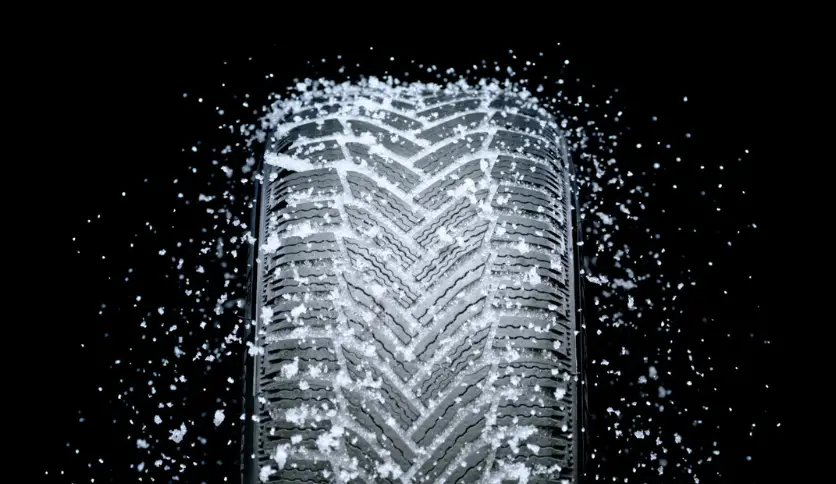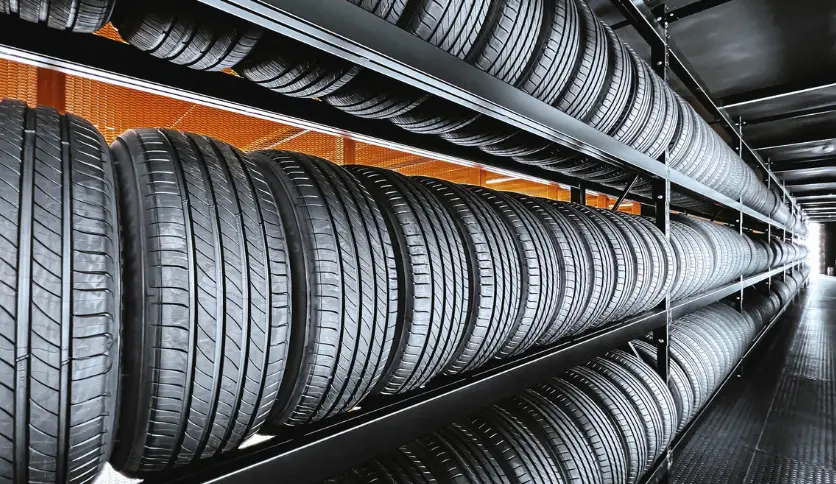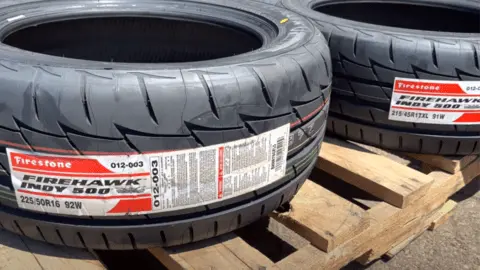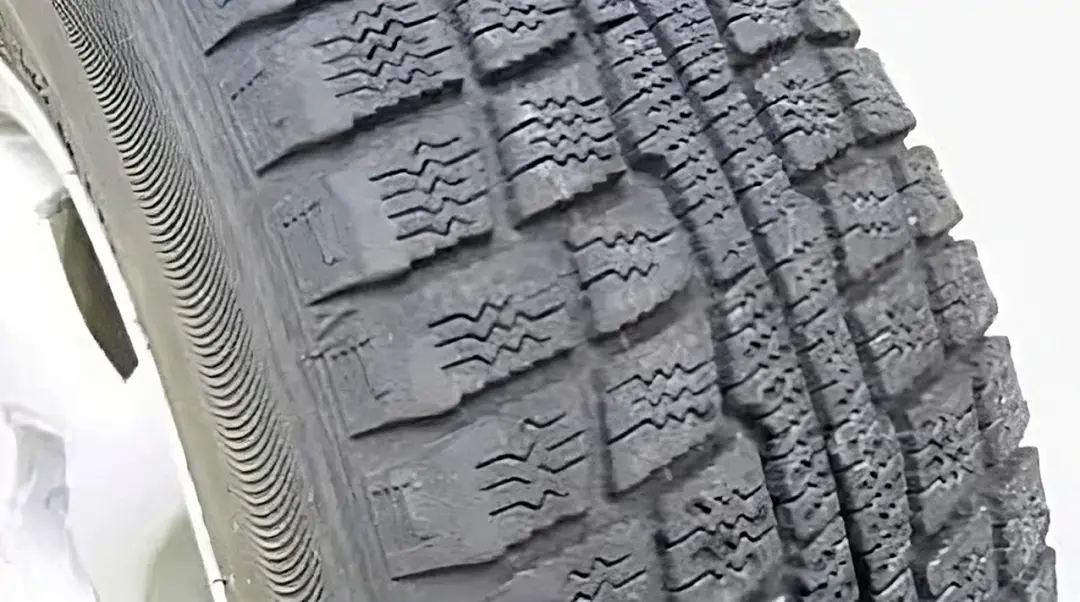Want to find the right tires for your car? You don’t have to seek an expert opinion on the difference between 215 and 225 tires. Learn for yourself. Sure, it can be a challenge, but with the right knowledge, it is not that complicated.
In addition, to learn about the tire brand and its model, dimensions are very important. The right choice of tires is highly important because it allows the car to stay safe and maintain its characteristics.
The information about dimensions you can find in the documentation of automobiles or you can read by yourself. It is located inside the car, on the driver’s side.
When you find this data, you have finished the step that follows the consideration of changing the tires itself. But how do you know when the time is for it?
When you know which parts of a tire to look at, it’s easy. It is mostly influenced by how old the tires are and in what condition they are.
Over time, the tire certainly ages, which changes its characteristics and also wears out. In the manufacturer’s opinion, they should be changed every 6 to 10 years.
Contents
- 1 What Is The Difference Between 215 And 225 Tires?
- 2 General Performances a Tire
- 3 Characteristics of 215 tires
- 4 Characteristics of 225 tires
- 5 Comparative Difference Between 215 and 225 Tires – 215 vs 225 tires
- 6 FAQs Related to the Difference Between 215 and 225 Tires
- 6.1 01. Are tires 215 and 225 the same?
- 6.2 02. Is there a huge difference between 215 and 225 tires?
- 6.3 03. How important is the tire brand?
- 6.4 04. What does tire size 225 mean?
- 6.5 05. What material is used for making tires?
- 6.6 06. What types of tires exist for cars?
- 6.7 07. Are 215 and 225 tires interchangeable?
- 6.8 08. Can you replace 215 tires with 225?
- 6.9 09. Can I use 215 60r16 instead of 225 60r16?
- 6.10 10. what is the difference between 225/60r16 and 215/65r16
- 7 Conclusion
What Is The Difference Between 215 And 225 Tires?

The primary difference between 215 and 225 tires lies in their width. The numbers “215” and “225” refer to the tire’s width in millimeters from one sidewall to another. Thus, a 225 tire is 10mm wider than a 215 tire. This difference in width can affect several aspects of vehicle performance. Wider tires, like the 225, may offer better traction and stability, especially in corners, because they have a larger contact area with the road.
However, they might also result in slightly higher fuel consumption due to increased rolling resistance. The choice between 215 and 225 tires may also depend on the vehicle’s wheel size and the manufacturer’s recommendations for optimal performance and safety.
General Performances a Tire
In addition to the dimensions, the other main performances of any tire, which are taken into account when buying, are listed below:
01. Grip
The adhesion of tires to the ground is an important safety factor. Stability during driving, acceleration, and braking depends on it. Different weather types apply to special weather conditions. Below, you can watch a video on the grip of the tires:
02. Longevity
They differ in design and quality. Tires with better characteristics last longer than standard ones because they are made with higher quality, regardless of the service life. Of course, this is also influenced by other factors, such as the road where they drive, climatic conditions, and so on.
03. Fuel efficiency
Tires can affect consumption itself. Some tires save fuel while others do not. The material from which they are made has the greatest influence on that.
04. Handling
Handling is one of the important factors because it directly affects road safety. Depending on it the car is stable or not. Sports cars have the most efficient tires, which enables them to maneuver more easily and safely while driving.
05. Cosiness and noises
The tires also affect the quality of the ride, making it comfortable or not. They can provide a smoother ride for easier crossings over rough roads.
The sound of the tires also influences her choice. This sound is generated when the tire and the surface come into contact. A bigger tire makes more noise.
06. Robustness
Robustness is the tire’s ability to overcome different everyday risks. Depending on the quality of the road, a selection of tires is made.
Characteristics of 215 tires

It is a great choice for everyday driving, versatile and affordable. The designation “215” refers to the width in millimeters, measured from side to side. It will be easier to accelerate with them.
They are efficient in fuel consumption. The ride is much quieter due to the ability to reduce the sound. In terms of self-adhesion, 215 tires are narrower and grip better.
Precisely because of the lower width-to-height ratio, they react more effectively to irregularities on the road, which affects the stability of the steering.
When to Choose 215 Tires
Choosing 215 tires depends on several factors, including your vehicle’s make and model, driving habits, and the conditions you typically drive. If your vehicle’s manufacturer recommends 215-width tires, this is a good starting point, as these tires are designed to fit your vehicle’s wheels properly and support its load. For drivers prioritizing fuel efficiency and a smoother ride, 215 tires can balance performance and comfort, especially for smaller to medium-sized cars.
They can provide adequate traction and stability for everyday driving in moderate conditions. However, if you frequently drive in challenging conditions such as heavy snow, off-road, or high-speed environments, you might need wider tires for extra traction or specialized tires designed for those conditions. Always consult your vehicle’s owner’s manual or a tire professional to ensure you select tires that meet your specific needs and safety standards.
Characteristics of 225 tires
The designation “225” refers to the width in millimeters, measured from side to side. A wider tire grips better on the road but is otherwise less fuel-consuming.
This increase in the car’s contact with the road enables its easier handling. That means that on any surface, dry, wet, or slippery, 225 tires provide excellent traction.
Also, they are noisier than the smaller ones but make a much more comfortable drive. In terms of load capacity, 225 tires can carry less load.
When to Choose 225 Tires
Choosing 225 tires depends on a few key factors, including your vehicle’s make and model, your driving conditions, and your personal driving preferences. Typically, 225-width tires are considered a good balance between performance and comfort for many passenger cars, offering improved handling and stability compared to narrower tires while still maintaining a comfortable ride. They are especially suited for compact to mid-size sedans and some smaller SUVs. If you frequently drive in wet or slippery conditions, a tire with a width of 225 can also offer better water evacuation, reducing the risk of hydroplaning.
Additionally, if you’re looking for a tire that provides a good grip on the road without going to the wider end of the spectrum, which can affect fuel efficiency and ride comfort, 225 tires might be the right choice. However, always consult your vehicle’s owner manual or a tire professional to ensure compatibility and optimal performance.
Comparative Difference Between 215 and 225 Tires – 215 vs 225 tires

Given the mandatory possession of tires and the importance of their selection, it is necessary to know their characteristics of the same.
Each type of tire has its characteristics, which differ in certain parameters. Therefore, the main differences between these 2 models are listed below:
01. Weight
Larger tires are heavier because width adds to the weight. But because of that, they can carry a heavier load. Heavier tires need a longer period to warm up.
Yet they look cooler. The weight of the tire further significantly affects fuel economy.
02. Gas mileage
The difference in tire width affects the speedometer itself and, thus, the fuel consumption. 225 tires consume more fuel, while 215 tires have higher fuel efficiency. If you want your tire to have both, you need to examine the tires from different manufacturers in more detail.
Remember that even large tires will not always have higher fuel consumption (because that depends on the road and the speed at which they drive), just as smaller tires will not always mean fuel savings.
03. Carloads
A load index is a number that tracks the size of the tire. It shows how much weight a tire can withstand in a state of proper inflation.
The indices are 75 – 105 for passenger tires, each representing a certain load capacity. As we already mentioned, load capacity is much higher with 225 tires.
We need to know how much weight every car can carry. In this regard, 225 tires are needed for cars with a higher weight capacity (especially those transporting heavier loads). On the other hand, cars with 215 tires can carry less load.
04. Stability
Bigger tires are more stable because they hit the bigger ground. The more the tire is on the road, the easier it is to manage. They grip better on the road, allowing the driver to retain more control, especially when driving at a relatively high speed. In this regard, when we compare the 225 and 215 tires, the 225 tires provide safer handling.
05. Aspect ratio
The tire size is calculated by dividing the cross-sectional height of the tire by the cross-sectional width, which is the height of the side. It directly affects the performance of the tire itself. 215 has a larger scale compared to 225. On the other hand, 225 will be more stable on the road due to the lower scale.
06. All-weather conditions
225 is a tire that behaves perfectly on all surfaces in different climatic conditions. It does not matter whether the surface is dry or wet, whether it is raining or snowing. Tire 215 consumes fuel more efficiently because of the same specification.
07. Metric Sizes
The numbers 215 and 225 in tire sizes refer to the width of the tire tread in millimeters. So, a 215 tire is 215mm wide, while a 225 tire is 225mm wide. These measurements are part of the tire’s metric size, indicating the tire’s cross-sectional width.
08. Rim Diameter
The rim diameter for 215 and 225 tires is typically the same, as the numbers 215 and 225 refer to the tire’s width in millimeters, not the diameter of the rim. The rim diameter is denoted by the last number in the tire size specification, which is measured in inches. For example, in tire sizes, 215/55R17 and 225/45R17, the “17” indicates that both tires are designed to fit on 17-inch rims.
09. Price
The price difference between 215 and 225 tires can vary widely depending on the brand, model, and specific features like speed rating, load capacity, and tire technology. Generally, 225-width tires might be slightly more expensive than 215-width tires due to their larger size and potentially better performance characteristics. However, the price difference is often insignificant and can range from as little as $5 to $20 per tire, depending on the factors mentioned. To get the most accurate and current price comparison, it’s best to check with tire retailers or online tire stores for the specific tires you’re considering.
10. Pros and Cons
The main advantages of the 215 tire type are that it has a lifetime warranty and can be purchased at an affordable price. As for the type of tire 225, their main advantages are good durability and stability and the possibility of less noise.
The main disadvantage of tire 215 is that it is too narrow, while the main disadvantage of tire type 225 is that it needs quality improvement.
FAQs Related to the Difference Between 215 and 225 Tires
01. Are tires 215 and 225 the same?
The answer is yes because there is not much difference in the tire width, but that is not the optimal solution as they are the same. The difference in the aspect ratio is a small change that will affect the performance of the tires on the road. But both tires can mostly fit on the same rim.
02. Is there a huge difference between 215 and 225 tires?
It depends on what you expect from the tires. Since they have slightly different widths, the 225 grips better on the road, giving the tires excellent performance in all seasons. Because it is less wide, 215 is a bit smaller than 225., which results in less fuel consumption, better stability, and handling.
03. How important is the tire brand?
As with all other purchased items, the quality and brand of tires themselves can cost differently. Again, the more expensive you pay, the better it will be.
04. What does tire size 225 mean?
The number “225” stands for the tire’s width in millimeters.
05. What material is used for making tires?
Natural and synthetic rubber is used for the production of tires. Material is quite important because it influences fuel efficiency.
06. What types of tires exist for cars?
There are 3 different types: all-season, summer, and winter.
07. Are 215 and 225 tires interchangeable?
The main difference between 215 and 225 is that 225 is 10 mm wider, adding a certain amount of weight-carrying capabilities and facilitating handling.
There are exceptions with different tire manufacturers, so it is best to do so; even this small change usually leads to inaccuracy of the speedometer and affects fuel consumption.
08. Can you replace 215 tires with 225?
Yes, you can replace 215 tires with 225 tires, provided there is enough clearance in the wheel well to accommodate the slightly wider tire and the diameter is compatible with your vehicle’s specifications. However, it’s important to consult your vehicle’s manual or a professional to ensure proper fit and to avoid any potential issues with handling, speedometer accuracy, and overall performance.
09. Can I use 215 60r16 instead of 225 60r16?
Yes, you can use 215/60R16 tires instead of 225/60R16, resulting in a slightly narrower tire. Ensure compatibility with your vehicle and consider potential impacts on handling and odometer accuracy.
10. what is the difference between 225/60r16 and 215/65r16
The difference between 225/60R16 and 215/65R16 tires is their width and aspect ratio. The “225” and “215” indicate the tire width in millimeters; 225mm is wider than 215mm. The “60” and “65” are the aspect ratios, representing the height of the tire sidewall as a percentage of the tire width; a 65 aspect ratio means the tire’s sidewall height is taller than a 60 aspect ratio. Both tires have the same rim diameter of 16 inches. Essentially, the 225/60R16 is wider with a shorter sidewall, while the 215/65R16 is narrower with a taller sidewall.
RELATED: 4 Season Tires Vs Winter Tires
Conclusion
Based on the above, we can get acquainted with their basic characteristics and choose based on that. We will list priorities and purchases depending on the vehicle itself and our requirements.
Certainly, both types of tires are designed to provide the best possible performance. So, in the end, it is up to us to decide.

Hello, this is Wesley Shelton, currently working in a car restoration company for over 5 years. Before that, I was a worker at a small car repair shop. As I was a car freak from a young age and worked as a professional for over half a decade, I think I now know pretty much everything about every car and its parts. To establish my name as a professional and help others by sharing my knowledge, I’ve created this website, which I work on whenever I get free time. I hope you’ve enjoyed my informative blog!




